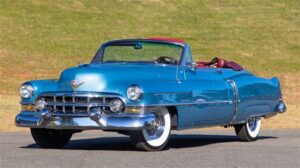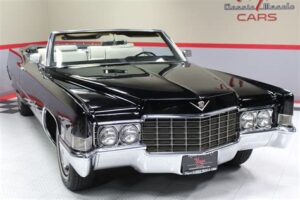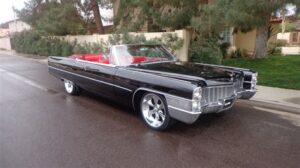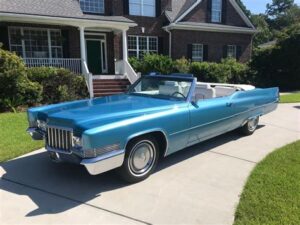Are you seeking an upgrade for your vehicle that enhances performance and ensures compliance with environmental standards? Look no further than the BMW Cadillac Converter, a crucial component that plays a vital role in reducing harmful emissions while boosting your engine’s efficiency. In this comprehensive guide, we will delve into the significance of the BMW Cadillac Converter, helping you understand its importance and how to identify potential faults. Additionally, we’ll provide you with step-by-step instructions on replacing your converter effectively, along with the numerous benefits of making an upgrade. To keep your BMW running at its best, we’ll also discuss maintenance tips for optimal performance. Whether you’re a seasoned car enthusiast or a new BMW owner, this article has everything you need to maximize your vehicle’s capabilities. Let’s get started on unlocking your BMW’s full potential!
Understanding The Importance Of A BMW Cadillac Converter
The bmw cadillac converter plays a crucial role in the emissions control system of your vehicle. It is designed to convert toxic gases produced during combustion into less harmful substances before they are released into the atmosphere. By doing so, it helps to reduce the overall environmental impact of your vehicle.
Moreover, a functioning bmw cadillac converter not only contributes to cleaner air but also ensures that your BMW operates efficiently. A faulty converter can lead to poor engine performance, decreased fuel efficiency, and increased emissions, which can ultimately result in more extensive damage to your vehicle. Therefore, understanding and maintaining this component is essential for both environmental reasons and the longevity of your BMW.
Additionally, in many regions, having a functional bmw cadillac converter is required by law for vehicle registration and compliance with emission standards. This makes it imperative for BMW owners to be vigilant about the condition of their converter to avoid potential legal issues and costly repairs.
How To Identify A Faulty BMW Cadillac Converter
Identifying a faulty bmw cadillac converter can save you from costly repairs and enhance your vehicle’s performance. Here are some key signs to look out for:
1. Check Engine Light: One of the first indicators of a failing cadillac converter is the illumination of the check engine light. If this light appears on your dashboard, it may be time to have your vehicle inspected.
2. Decreased Engine Performance: A faulty converter can lead to a noticeable decrease in engine performance. If your vehicle struggles to accelerate or experiences a reduction in power, the bmw cadillac converter might be to blame.
3. Unusual Odors: A malfunctioning cadillac converter may emit a sulfur smell, resembling rotten eggs. This smell is often indicative of a problem with the converter’s operation.
4. Poor Fuel Efficiency: If you observe a sudden drop in fuel efficiency, your bmw cadillac converter may be obstructed or malfunctioning, impacting the vehicle’s ability to burn fuel effectively.
5. Overheating: A faulty converter can cause excessive heat buildup under the vehicle, resulting in a dangerously hot exhaust system. If you notice an unusual increase in undercarriage temperature, have your cadillac converter checked immediately.
By noting these signs, you can take proactive steps to address issues with your bmw cadillac converter before they escalate into more serious problems, keeping your car running smoothly and efficiently.
Steps To Replace Your BMW Cadillac Converter Effectively
Replacing the bmw cadillac converter is a task that requires careful attention to detail and the right tools. Follow these steps to ensure you conduct the replacement effectively:
-
Gather Necessary Tools and Materials:
Before starting the replacement, make sure you have the following:
- Jack and jack stands
- Wrench and socket set
- Pliers
- Heat-resistant gloves
- Replacement bmw cadillac converter
- Exhaust sealant or gasket if necessary
-
Safety First:
Park the vehicle on a flat surface and turn off the engine. Allow the exhaust system to cool down. Use the jack to lift the vehicle and secure it with jack stands.
-
Locate the Existing Converter:
Identify where the bmw cadillac converter is located in your exhaust system. It is usually situated between the engine and the muffler.
-
Remove the Old Converter:
Loosen and remove the bolts holding the old converter in place using your wrench set. Be careful while disassembling to avoid damaging surrounding components. If necessary, use pliers to help remove stubborn bolts.
-
Inspect and Prepare:
Examine the exhaust pipes leading to and from the converter for any damage or corrosion. Clean the surfaces where the new converter will be installed to ensure a proper seal.
-
Install the New Converter:
Position the new bmw cadillac converter in place and secure it with the bolts. Ensure it is tightly fastened but be cautious not to overtighten, as this can damage the converter or the exhaust pipes.
-
Check for Leaks:
Once the installation is complete, start the engine and let it idle. Listen for any unusual sounds and check for exhaust leaks around the new converter. If you detect smoke or strange noises, double-check your connections.
-
Dispose of the Old Converter:
Take your old bmw cadillac converter to a proper disposal facility or a recycling service. Many facilities will pay for used converters as they contain precious metals.
-
Final Inspection:
After a short drive, check once more for any signs of leaks or issues. Ensure everything is functioning correctly and that your vehicle is running smoothly.
By following these steps, you can effectively replace your bmw cadillac converter and maintain your vehicle’s performance.
Benefits Of Upgrading Your BMW Cadillac Converter
Upgrading your bmw cadillac converter can significantly enhance your vehicle’s performance, efficiency, and overall driving experience. Here are some of the key benefits associated with making this upgrade:
| Benefit | Description |
|---|---|
| Improved Exhaust Flow | Upgraded converters are designed to facilitate better exhaust flow, reducing back pressure and allowing your engine to breathe more easily. |
| Enhanced Engine Performance | An improved bmw cadillac converter can lead to noticeable gains in horsepower and torque, making your vehicle more responsive and powerful. |
| Better Fuel Efficiency | With increased exhaust flow and reduced strain on the engine, you may experience better fuel economy, saving you money at the pump. |
| Reduced Emissions | Modern catalytic converters are more efficient at filtering pollutants, ensuring that your vehicle is compliant with environmental regulations while contributing to cleaner air. |
| Longer Lifespan | Upgrading to a high-quality bmw cadillac converter often results in a more durable component that outlasts standard parts, reducing the need for frequent replacements. |
In summary, upgrading your bmw cadillac converter not only boosts your vehicle’s performance but also offers financial benefits in the long run, making it a worthwhile investment for any BMW owner.
Maintaining Your BMW Cadillac Converter For Optimal Performance
Regular maintenance of your bmw cadillac converter is essential to ensure its longevity and effective performance. Proper care can prevent costly repairs and maintain the vehicle’s overall efficiency. Here are some key maintenance tips:
- Routine Inspections: Periodically check the converter for signs of damage or wear. Look for cracks, holes, or rust that could affect its function.
- Monitor Engine Performance: Keep an eye on your engine’s performance. If you notice a decrease in power, poor fuel economy, or unusual noises, it may indicate an issue with the bmw cadillac converter.
- Check Exhaust Leaks: Ensure there are no exhaust leaks in the system. Leaks can alter the airflow and negatively impact the converter’s efficiency.
- Use Quality Fuels: Opt for high-quality fuel with the right octane rating. Poor fuel can generate harmful deposits in the converter, leading to reduced performance.
- Regular Engine Maintenance: Maintain your engine by following the manufacturer’s recommended service intervals. A well-tuned engine produces fewer pollutants and helps the converter function optimally.
By following these maintenance tips, you can significantly enhance the performance and lifespan of your bmw cadillac converter, ensuring your vehicle runs smoothly.
Frequently Asked Questions
What is a BMW catalytic converter?
A BMW catalytic converter is an essential component of the vehicle’s exhaust system that helps reduce harmful emissions by converting toxic gases into less harmful substances before they are released into the atmosphere.
How does a catalytic converter work in a BMW?
The catalytic converter works by using a combination of precious metals, such as platinum, palladium, and rhodium, to facilitate chemical reactions that convert carbon monoxide, hydrocarbons, and nitrogen oxides into carbon dioxide, water, and nitrogen.
What are the signs of a failing catalytic converter in a BMW?
Signs of a failing catalytic converter may include a decrease in engine performance, increased exhaust noise, the illumination of the check engine light, and unusual odors from the exhaust.
How important is the catalytic converter for a BMW’s performance?
The catalytic converter is crucial for the performance of a BMW as it not only helps in reducing emissions but also ensures the engine runs efficiently, improving fuel economy and overall vehicle performance.
Can you drive a BMW without a catalytic converter?
Driving a BMW without a catalytic converter is illegal in many regions due to environmental regulations, and it can lead to increased emissions, potential engine damage, and failing vehicle inspections.
How often should a BMW catalytic converter be replaced?
Typically, a BMW catalytic converter can last from 70,000 to 100,000 miles, but this can vary based on driving habits, maintenance, and other factors. Regular inspections can help determine if replacement is necessary.
What should I do if my BMW catalytic converter is damaged?
If you suspect that your BMW’s catalytic converter is damaged, it is advisable to have it inspected by a certified mechanic who can conduct tests and recommend repairs or replacements as needed.





